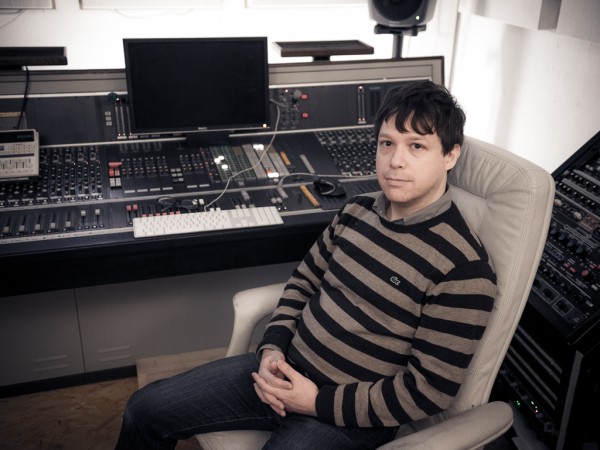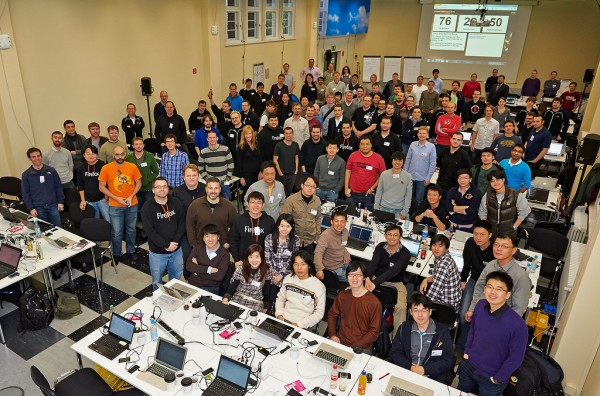In summary… The Firefox OS Work Week in Berlin was a success, the team managed to fix all of Mozilla’s blockers for a V.1.0 Gold Build Candidate.
During the week, I had the opportunity to sneak out to the east side and visit a couple of the local designers contributing to the project, one being Aaron Day who I worked with on the Firefox OS Sound Design. With such a global community it’s rare to see one another face-to-face, and the timing gave us a chance to have our first meeting in person, as well as do a post mortem on the design with a 1.0 device in hand.
So Where Are We Now? Initial Brief… What is Firefox?
The Firefox brand is both fundamentally human and deeply high-tech. The humanity comes from its status as a non-profit, open source product, built by a passionate community of users around the world who support Mozilla’s mission of advancing the web on behalf of individuals. Simply put, it prioritizes people over profits.
The high-tech side comes from its rich history of driving the Web forward by fostering innovation and creating opportunities for new ideas to develop and thrive. We believe that the Web is the defining creation of this era and are dedicated to both protecting and advancing it.
A successful sound design for Firefox should bridge these two worlds. Keywords that come to mind include: organic, optimistic, human, innovative, honest, smart, confident, and warm.
The Concept.
Our aim was to create 3 different themes for the sound design to cover a range of users.
- The Baseline, the essence of Firefox. Contemporary. Organic. Approachable. Casual.
- Baseline Variation A. Elegant. Soft. Feminine. Relaxed.
- Baseline Variation B. Performant. Loud. Direct. Business.
Those following the project, however, would have recognized that ambitious timelines and our small team forced us to prioritize coding the app to a feature complete state, OS stability, and performance over themed notification playback. Audio playback in general was a late addition, not to mention user selected ringtones and notifications. So perhaps for version 2 of the platform these will make an appearance.
 Aaron’s “office” and his studio.
Aaron’s “office” and his studio.
The Concept Revised.
As our original requested features for sound themes were de-scoped and our launch markets were in flux, I decided our best approach would be to create a wide palette of sound with focus on alarm and ringtones. Audible notifications are important, however in our launch markets due to prevalent mugging discretion is prioritized over audible notifications.
Alarm Tones.
The emphasis was on complexity and elegance for a total of eight tones. Yes, we did include some classic, jarring tones mimicking standard alarms:
Alarm Clock Classic Clock Alarm Progressive
I wanted to make the “wake-up” process less of a sonic sledgehammer but rather something progressive and sensitive to one’s emotional state. Focus was on a smooth ease in, a gentle good morning… Alarm Clock Soft Humming Waves
Ringtones.
As with alarms, the classics are included, with five ringers from actual phones. However the phones we chose have more characters and, at least for North America, are unique tones:
Ringtone Classic Courier
The other ten tones have wide spectrum of flavour. Variations on classic ringtones from discrete to loud.
Some repeating: Ringtone Digital Dapple
Some progressive: Ringtone Digital Ascent
With the last few cycles we also tried something much more experimental. Many users select music as their ringtone. What if we created a track structured like a ringtone but with flavours of our launch South American market… drums, urban, youthful, electric… Ringtone Vamos La Elektro
Notifications.
The OS includes 12 notifications, with focus on variety and directness over experimentation. Our default notifier: Notifier Bell
 Aaron with the mixer.
Aaron with the mixer.
Post Mortem
As we work towards various .1 updates on the path to a version 2 release, you will witness improvements in various aspects of the sound design.
Design Story.
With a better grasp of our upcoming schedule, and the recently completed Firefox OS brand identity, tightening the audio design story and adding the audio theming is high on my list. Various partners will want to add their own sound identity so a user focused method for switching between these sound profiles is key.
Quality.
Disk I/O (playback performance) and storage has been a challenge on the entry hardware we’ve been designing. We’ve managed to optimize the file size by maintaining maximum sound quality by utilizing the Opus Audio Format however there was still one factor which we couldn’t optimize, and that is the hardware speaker. Although the software build was completed, final hardware was still in flux. The tones on the device sound fine in many instances, but some of the more subtle sounds have clipped frequencies by the enclosure. As we have a clearer OEM partner road map for the future releases this will be addressed.
Performance.
Beyond the addition of new content, only in the last few weeks did we finally see audio feedback, haptics, and transitions work together, though it is no surprise that tuning is needed. The next few months will be spent on making them all “sing” in harmony.
Expect plenty of polish and optimizations in the months up ahead.






Robert Kaiser wrote on
wrote on
Someone Else wrote on
wrote on
Fabricio C Zuardi wrote on
wrote on
Patryk Adamczyk wrote on
wrote on